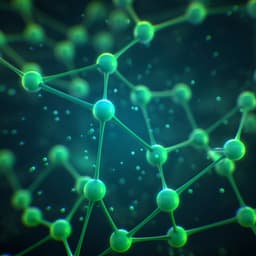
Environmental Studies and Forestry
Predicting adsorption ability of adsorbents at arbitrary sites for pollutants using deep transfer learning
Z. Wang, H. Zhang, et al.
This research, conducted by Zhilong Wang, Haikuo Zhang, Jiahao Ren, Xirong Lin, Tianli Han, Jinyun Liu, and Jinjin Li, introduces an AI approach leveraging deep neural networks and transfer learning to efficiently predict the adsorption ability of adsorbents for heavy metal ions and organic pollutants in water. The method demonstrates remarkable accuracy and speed compared to traditional DFT calculations, paving the way for advanced environmental remediation solutions.
~3 min • Beginner • English
Related Publications
Explore these studies to deepen your understanding of the subject.







